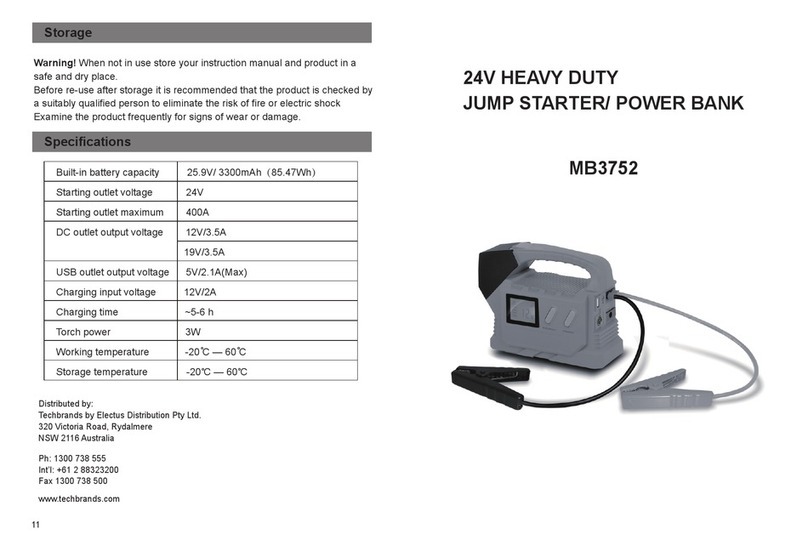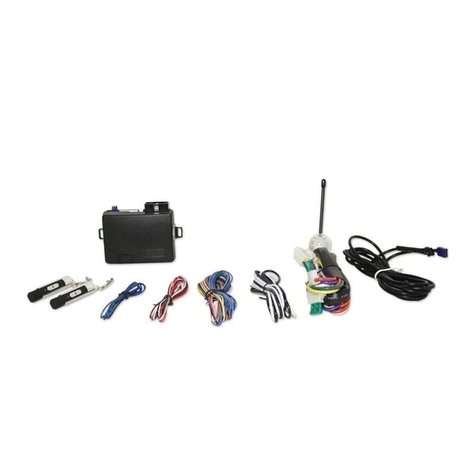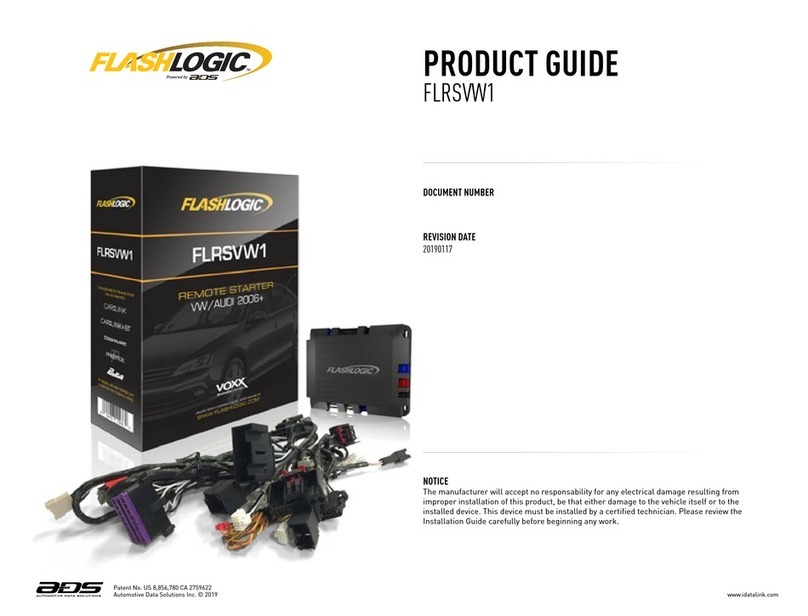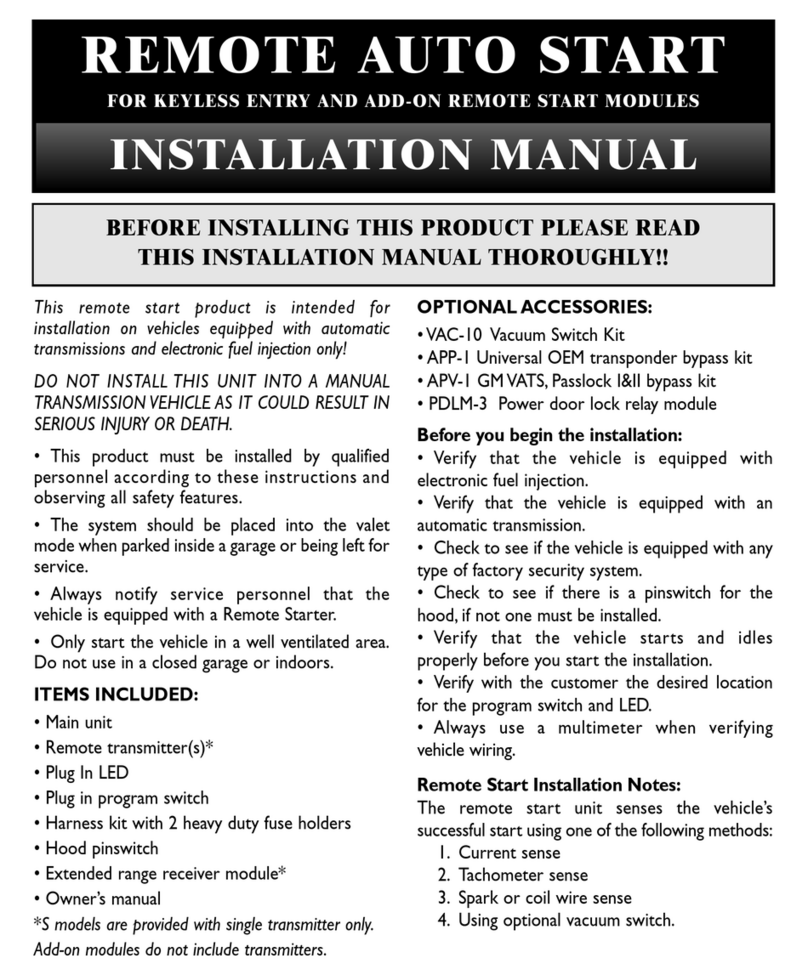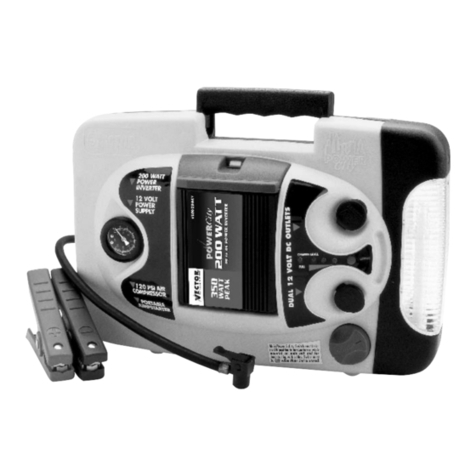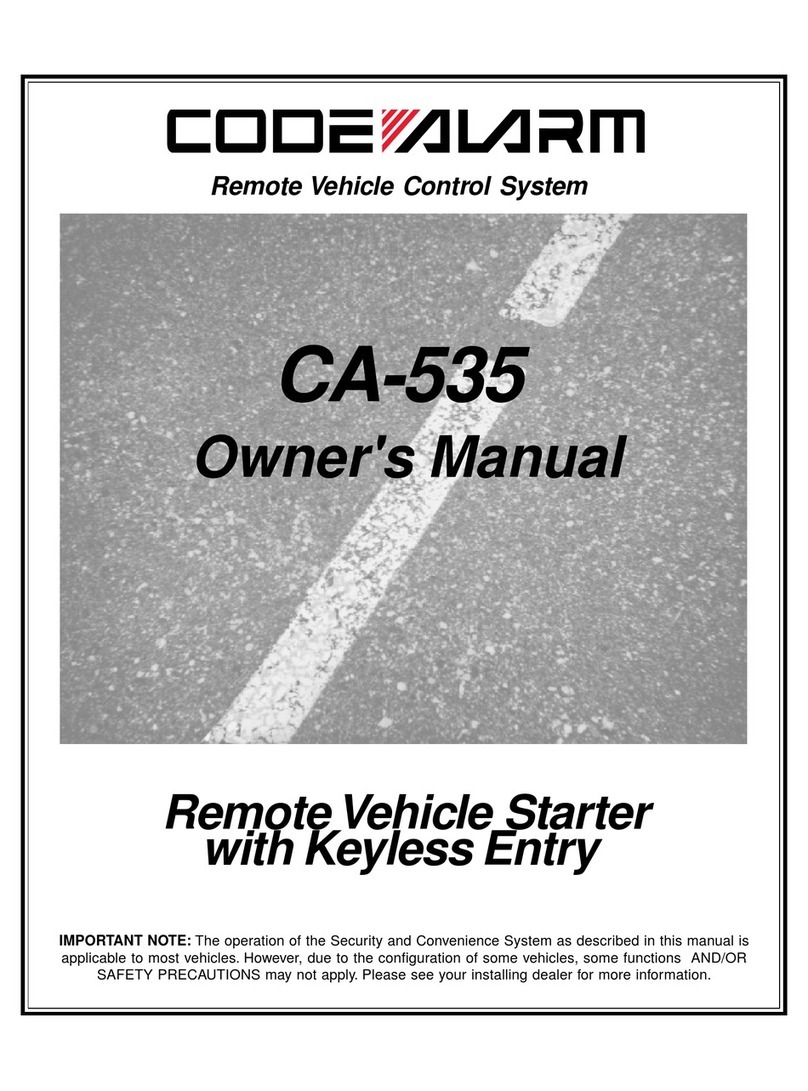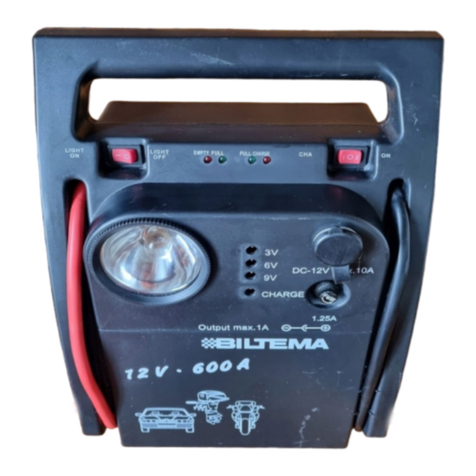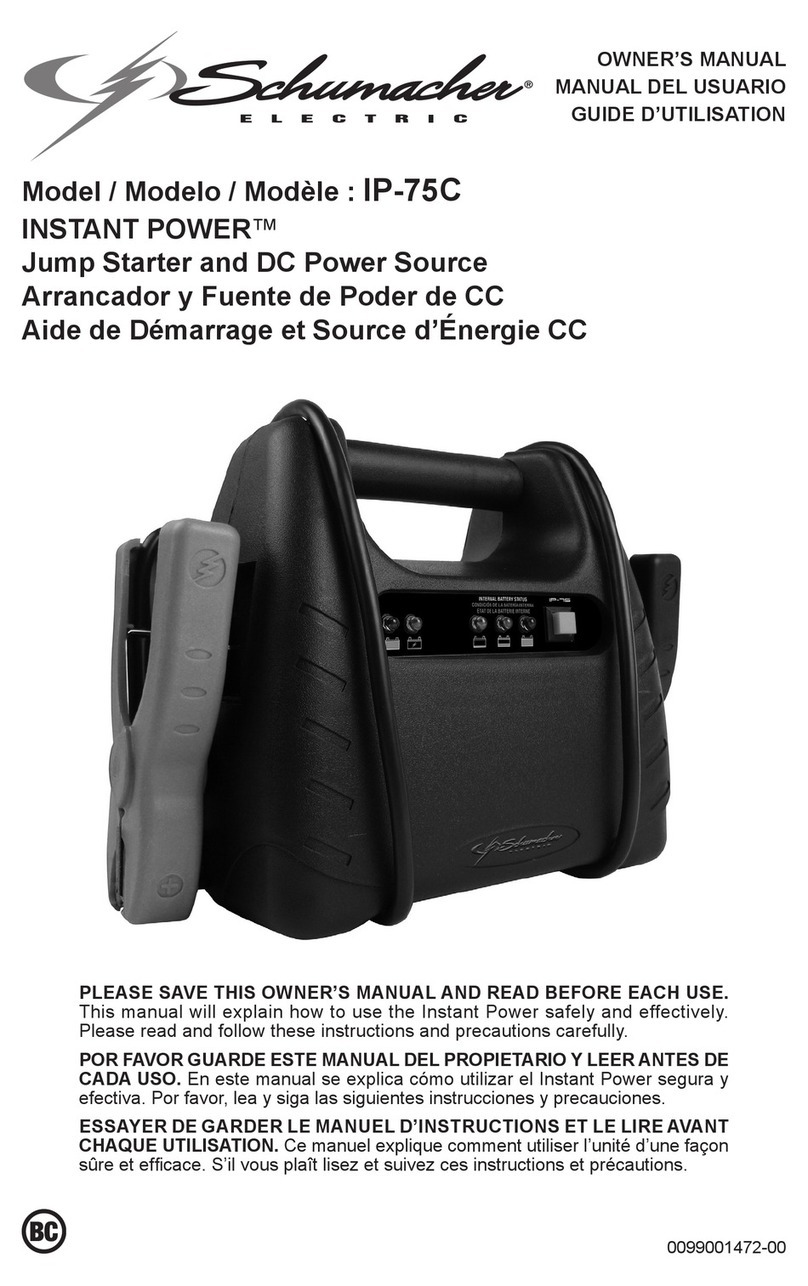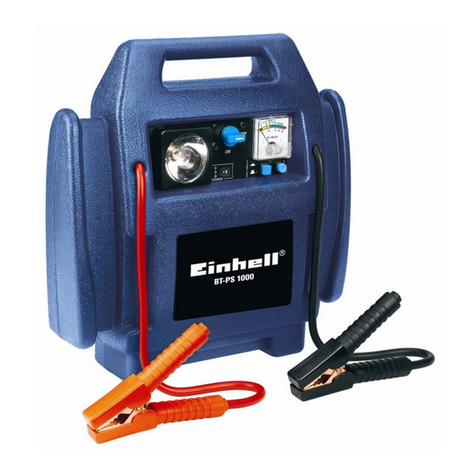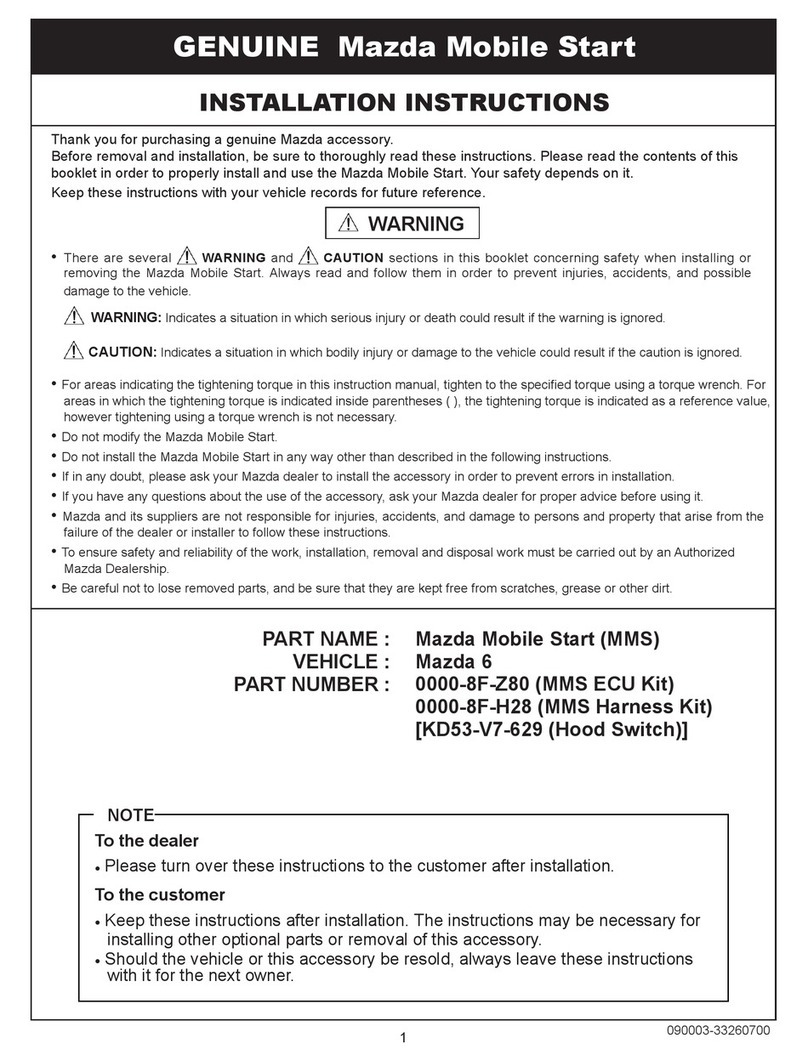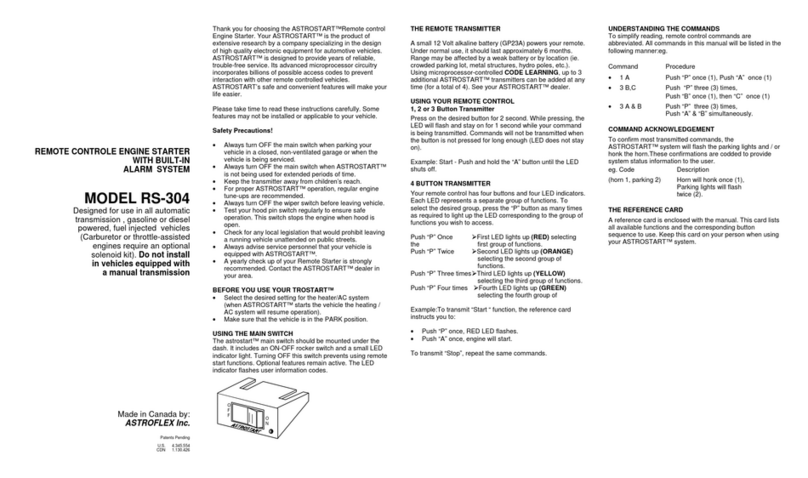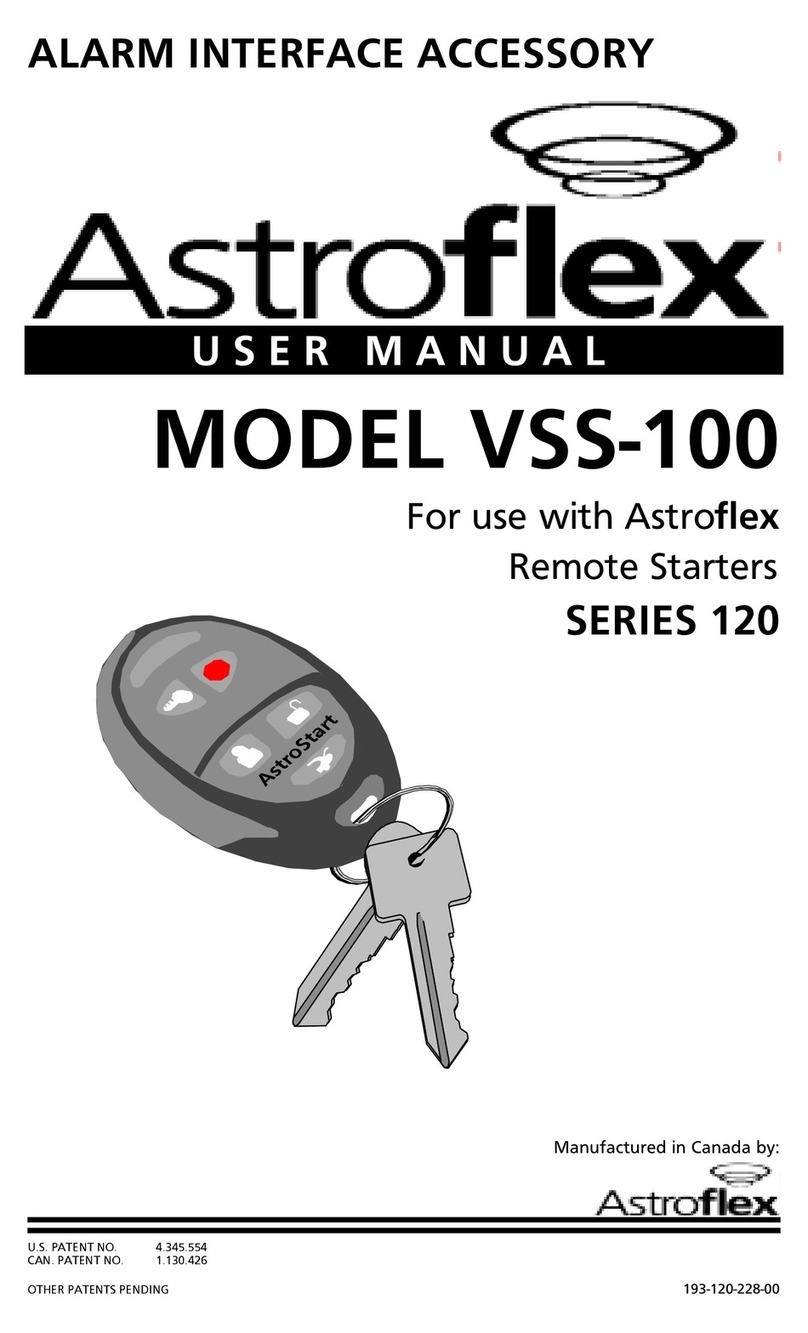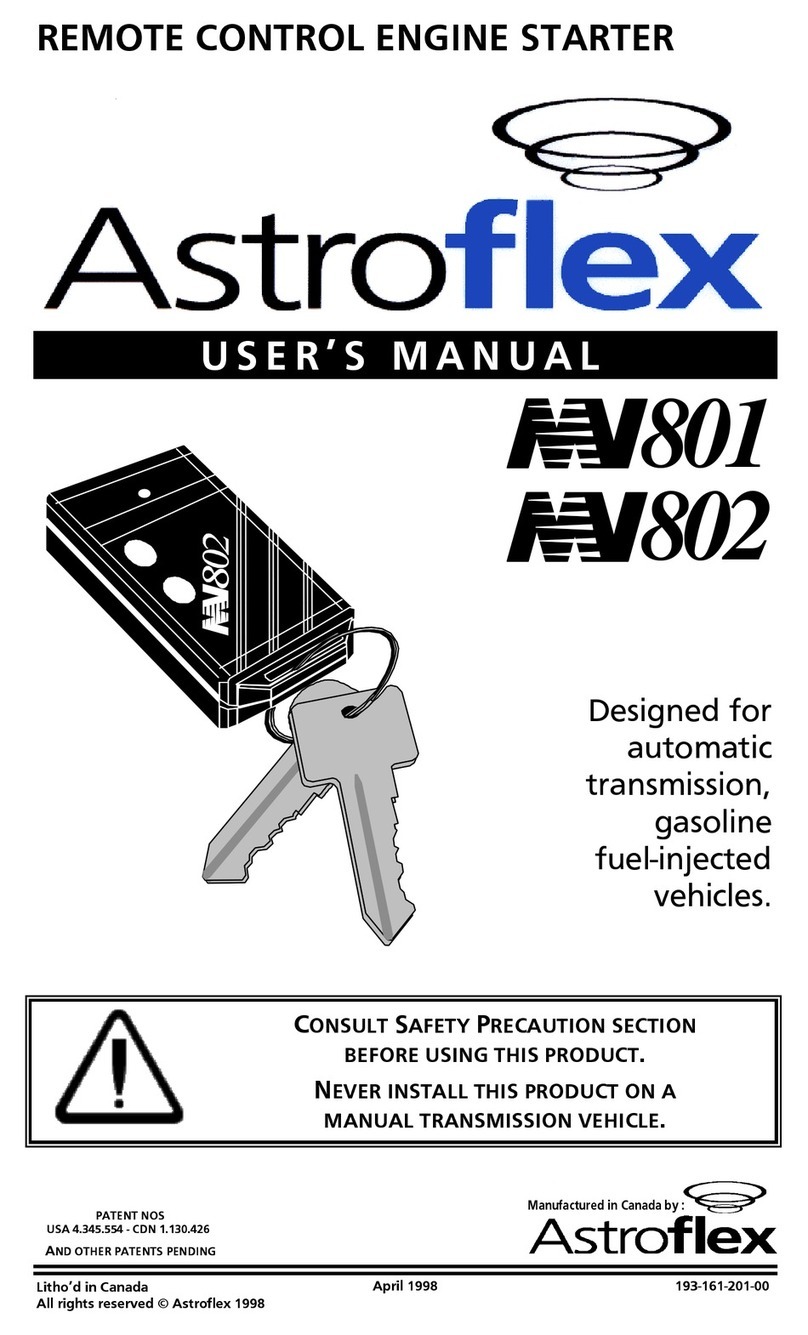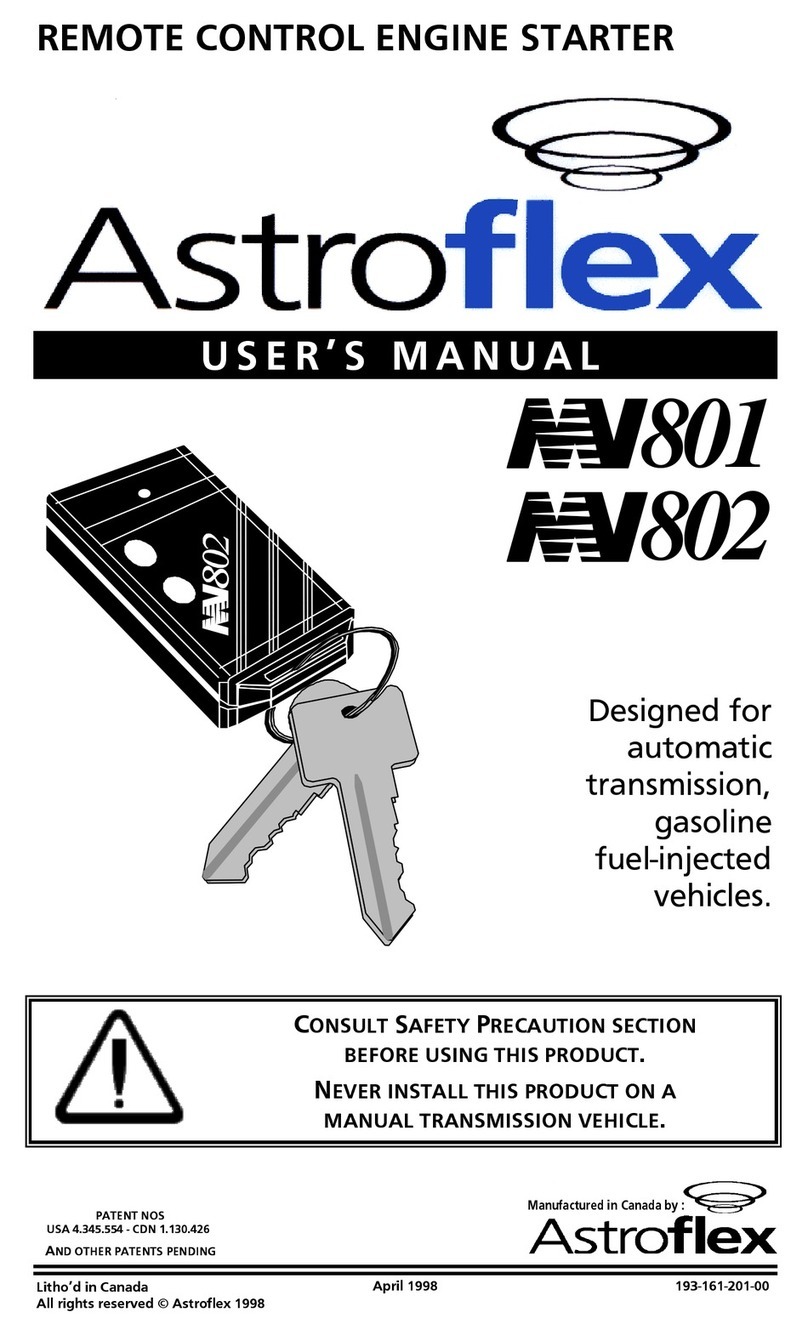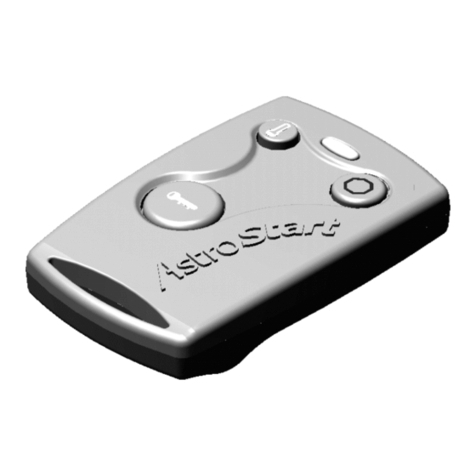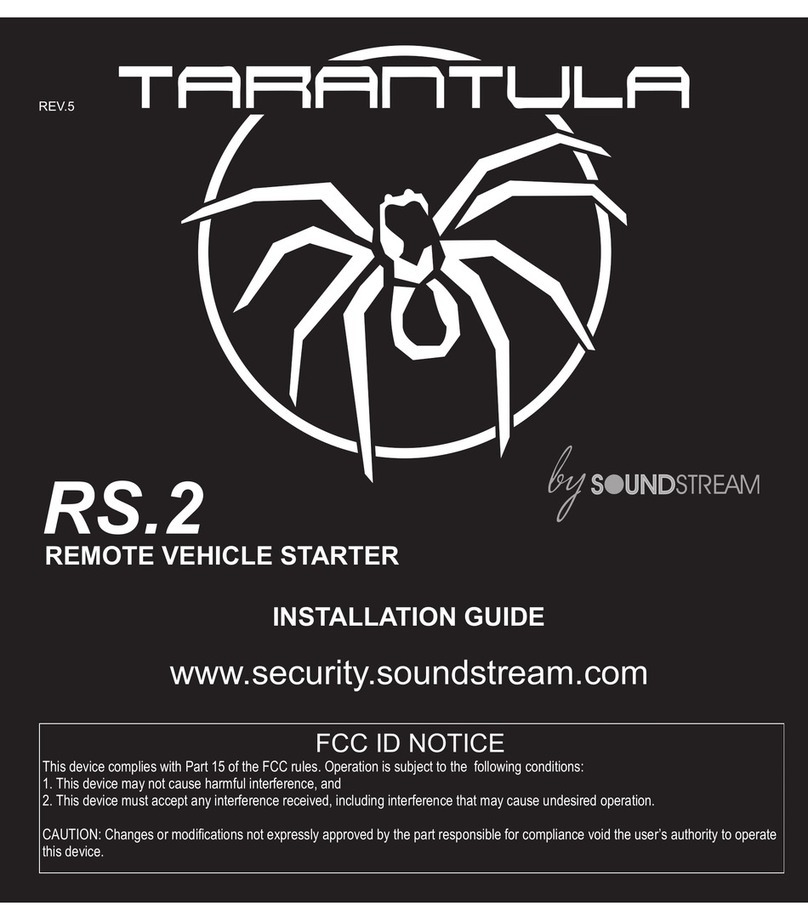Quick Programming
You may believe that a product as versatile as the AstroStart would be a program-
ming nightmare. In most cases, you will not need to change from the factory
default programming. In addition, Astrostart’s sophisticated processor allows
direct entry into a multitude of programming options with little effort.
All programming is performed through a 9 button DIP switch module. The
programming options for any feature are presented in the individual feature
explanation, which means there is no need to refer to a confusing but compre-
hensive master programming chart.
Will I Need To Reprogram a Feature?
Consult the following chart to determine if the defaults work for the installation. If
this chart reveals no required changes, move to the testing phase of the installa-
tion on page 21.
If changes to the default programming are required, please become familiar with
the following information in the programming charts.
6
6
Programmation abrégée
On pourrait croire qu'un produit aussi polyvalent que l'AstroStart poserait des
difficultés de programmation importantes. Il n'en est rien. Dans la plupart des cas,
aucunemodification desréglages par défautn'est nécessaire.De plus,grâce àson
processeurperfectionné,l'accèsdirectauxdiversesoptionsdeprogrammationse
faitsans difficulté.
Laprogrammation s'effectuepar l'entremised'unmodule à9commutateurs DIP.
Lesoptionsdeprogrammationpourchaquecaractéristiquesontprésentéesdans
lesinstructions quis'y rattachent,ce quiévite d'avoirà consulterun tableaude
programmation exhaustif et bien souvent déroutant.
Est-ce que je doit reprogrammer une option?
Référez-vousau tableauqui suitpour déterminersi lesréglages pardéfaut
conviennentàl'installationencours.Siaucunchangementn'estrequis,passezà
l'étape de vérification à la page 21.
EIROGÉTACSEÉDNAMMOCTUAFÉDRAPSNOITPO UAEVIN
sednammocéléTedegassitnerppa'lisfuasnoitacifidomenucua-ecivresneednammocéléT.eriassecéntseseriatnemélppussednammocélét1
ruetom/hcaT.nim/rt008editnelaredessetiv,erdnilyc1 2
udnoitarugifnoC ruetom udruetpurretni-egarramédedselcycselertneépuocegamulla-ecnesseàruetoM .trevuotsetopaceleuqsrolémreftopac 3
lovitnasemètsyS lovitna-noitcnofsrohtnememraér-egarramédsèrpaseriossecca'dialédedsaP .noitcnofsroh 4
seitroS selbammargorp )1onelbammargorpeitros(tnavanoislupmI 5
seitroS selbammargorp )2onelbammargorpeitros(sèrpanoislupmI 6
seitroS selbammargorp )3onelbammargorpeitros(erèirraerffoC 7
seitroS selbammargorp )4onelbammargorpeitros(reinnofalP 8
sialeR elbammargorp )elbammargorpnoitcnofàsialer(egamullA 9
edsnoitpO egalliuorrev -.ces7,0edegalliuorrev/édednoislupmI,.ces7,0edegamullAtnavAnoislupmI ednoitamrifnoc-elpmis=egalliuorrevédednoislupmi-noitcnofsrohegalliuorrevotua .noitcnofsrohegalliuorreve2 01
seriatilituseitroS udeérud-.ces7,0ed2oneriatilitunoislupmi-.ces7,0ed1oneriatilitunoislupmI .)tnemeluessnotuob6àednammocélét-noitcnofne(.ces03ed»euqinap«edom 11
ehcramedspmeT.setunim61=leseid-setunim8=ecnessE 21
ellenitnesedoM 8=ecnesse:ehcramedspmet-)F°5(C°51=ellenitnesedomuderutarépmeT .setunim61=leseid-setunim 31
àsednammocéléTsnotuob2
)temelues205elèdom(snotuob2àsednammocélétsedegadocéD
)FFO/NO(ELLENITNESTÊRRAEGARRAMÉD51
Sideschangementss'imposent,familiarisez-vousaveclestableauxde
programmation qui suivent et l'information qu'ils renferment.
CIPOTDELLORTNOCSERUTAEFTLUAFED LEVEL
srettimsnarT .denraelebtsumsetomerlanoitiddasselnuderetlaton-elbanEetomeR 1
enignE/hcaTdeepseldiMPR008,rednilyc1 2
enignE noitarugifnoC tcatnocdesolchctiwsdooH,selcycknarcneewtebffotucnoitingI,elcihevenilosaG .neposidoohnehw 3
tfehtitnA ytilibitapmoC ffotfehtitnA,ffognimraeR,putratsretfayaledyrosseccaoN 4
elbammargorP stuptuO )1#tuptuoelbammargorp(erofebesluP 5
elbammargorP stuptuO )2#tuptuoelbammargorp(retfaesluP 6
elbammargorP stuptuO )3#tuptuoelbammargorp(knurT 7
elbammargorP stuptuO )4#tuptuoelbammargorp(thgilemoD 8
elbammargorP yaleR )yalerelbammargorp(noitingI 9
kcoLrooD snoitpO -eslupgnikcolnU,ffokcolotuA,eslupkcolnu/kcol.ces7.0,noitingIerofebeslup.ces7.0 ffonoitamrifnoceslupgnikcoLdn2,elgnis 01
stuptuOytilitU noitarudcinaPdnoces03,2#eslupytilitudnoces7.0,1#eslupytilitudnoces7.0 )ylnosetomernottub6-nO( 11
emiTnuRenignEemitnur.nim61-leseiD,.nim8-enilosaG 21
pmeTlenitneS emiTnuR& leseidnim61-,sagnim8-lenitnesemitnuR,)Fº5(Cº51-erutarepmetedomlenitneS 31
setomeRnottuB-2
)ylno205ledom(gnidocedrettimsnartetomernottuB-2
)ffo/no(LENITNES=POTS=TRATS= 51
